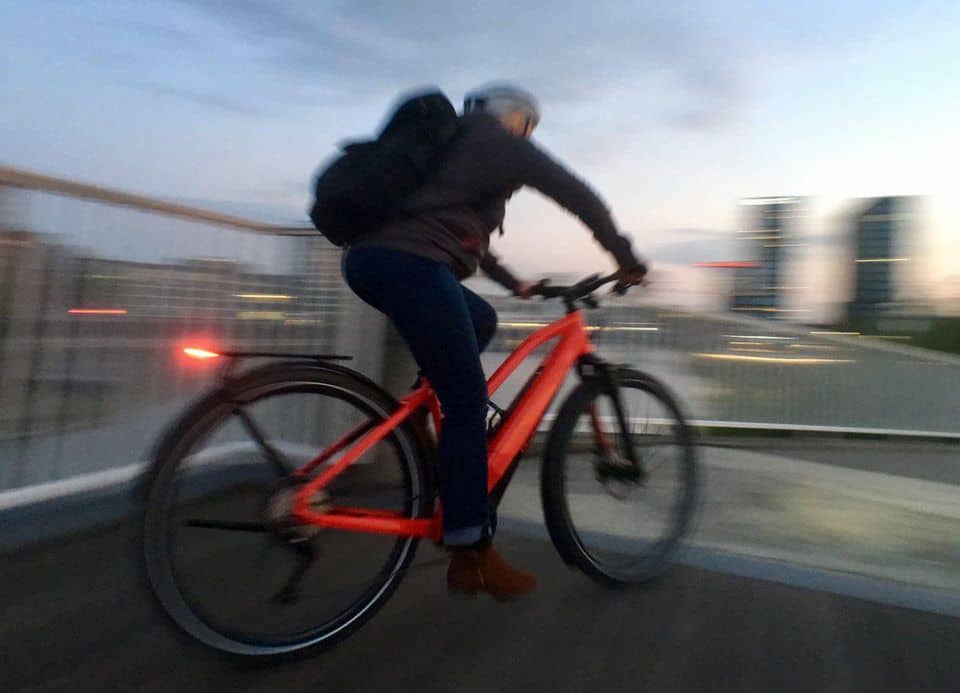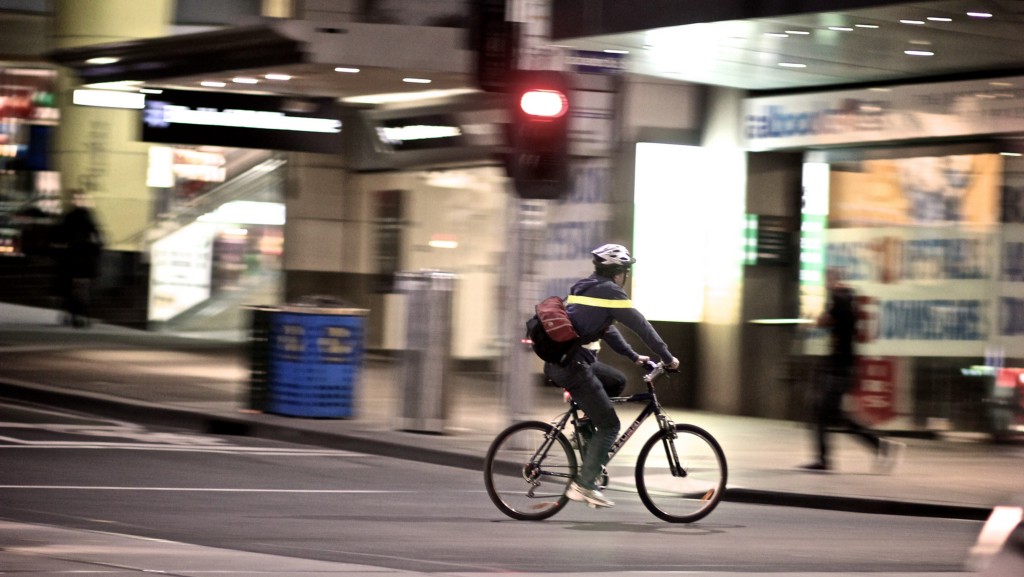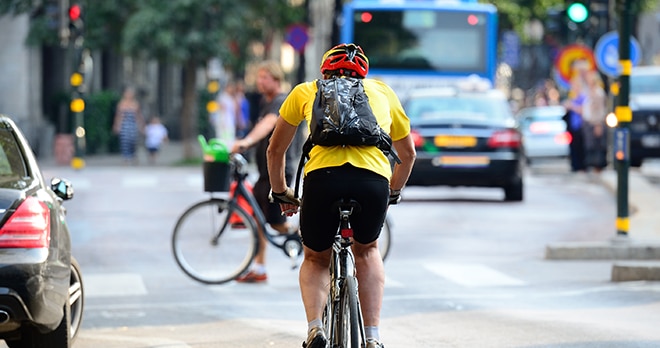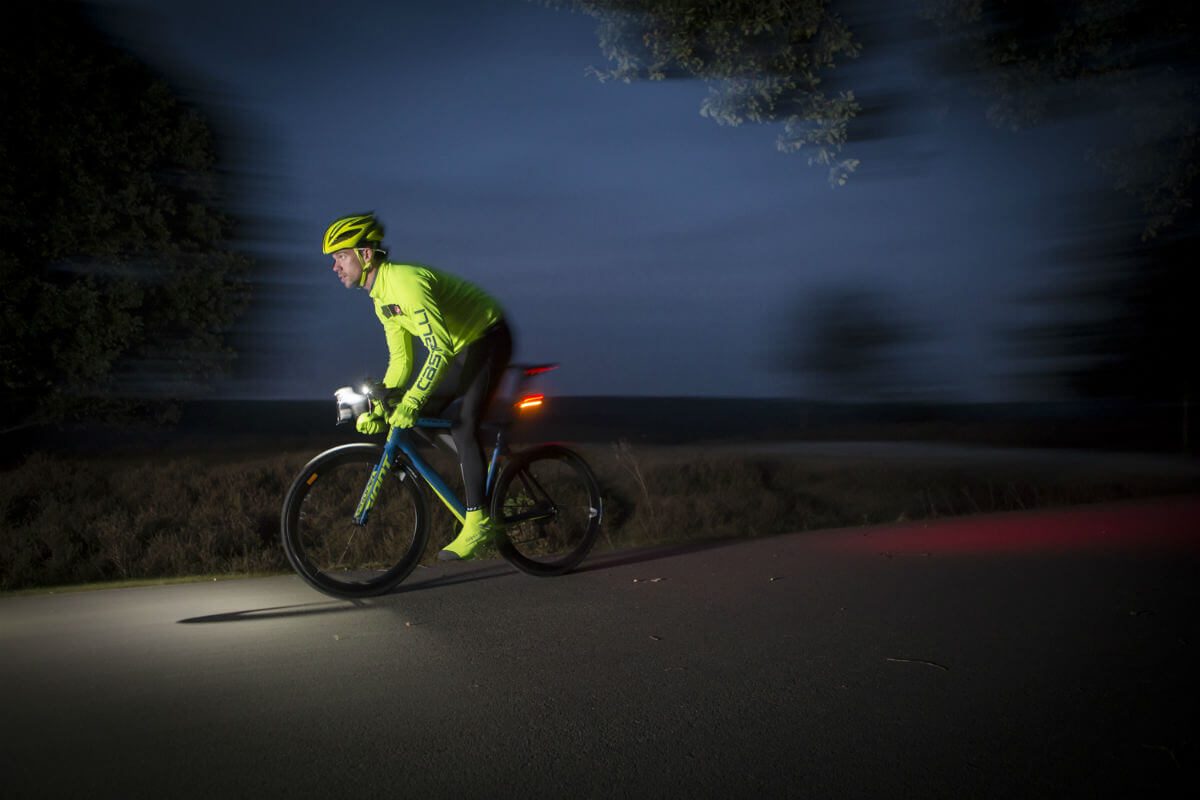Are Electric Bikes Dangerous? What are the E-bike Risks?
A common perception among non-riders is that electronic bikes are dangerous. But these bikes pose minimal danger compared to the accident and injury rates from risky rider behavior.
Riders may encounter risks such as:
- Accelerating too fast when starting
- Overspeeding
- Violating traffic regulations
- Battery catching fire
- Risky maneuvers
- Low visibility
- Mechanical failure
E-bike riding can be a safe activity if riders observe traffic rules, maintain their bikes well, and observe safety precautions when riding.
This article will explain seven risks of an electric motorcycle and share tips to avoid these risks. Knowing how to mitigate these risks will make you a better rider and protect you from unavoidable accidents.
Let’s get started!
Are electric bikes dangerous?
Electric bikes are not dangerous. The danger comes from how riders use and maintain e-bikes.
E-bikes are no more dangerous than motorcycles. If driven well, then e-bikes can be much safer than traditional bikes.
A 2019 study on e-bike safety showed 1.4 injuries occurred for every 1,000 e-bikes in the US. Only 2.8% were admitted to the hospital ER. On the contrary, conventional bikes seemed more dangerous since hospital admission rates were 8% to 12%.
But in 2021, the US Consumer Product Safety Commission (CPSC) reported that injuries from micro-mobility products such as e-bikes and e-scooters have increased by 70%.
The most common injuries for e-bike riders are soft-tissue injuries followed by fractures.
The biggest contributor to e-bike injuries is risky riding behavior. Overspeeding, occupying motor vehicle lanes illegally, running red lights, reverse cycling, and illegal manning increase the rider’s risk of accidents and injuries.
There are two types of e-bikes:
- Pedal Assist e-bikes - they use a battery and generate power from pedaling
- Throttle e-bikes
Some e-bikes have both features. Compared to regular bikes, e-bikes are:
- Convenient
- Appropriate for all ages
- Ideal when you don’t want to exert too much effort
- Can reach speeds of 30 miles per hour and more
- Regulated in countries such as Switzerland and the Netherlands.
What are e-bike risks?
The most common e-bike risks are:
- Accelerating too fast when starting
- Overspeeding
- Violating traffic regulations
- Battery catching fire
- Risky maneuvers
- Low visibility
- Mechanical failure
We explain the seven risks that e-bikes pose to riders and other road users. Once you know and mitigate these risks, you will become a safe and responsible rider.
1. Accelerating too fast when starting

Accelerating too much at the start is a very common incident. Inexperienced riders may find themselves applying too much throttle or twisting it when the bike is not in motion. You may twist the throttle without knowing that the bike is switched on.
How to mitigate this risk:
- Do not grip the throttle as a reflex action. This may cause injuries.
- Accelerate when your bike is moving.
- Monitor your throttle’s settings. Check that the controller settings so that the throttle does not twitch.
- Install a switch to regulate your power. You can then try different levels as you ride.
- If you don’t want to pop a wheelie, lean forward when you accelerate.
- Opt for a thumb or half-grip throttle.
- Choose a bike that has throttle safety features such as the pedelec bike’s sensor that requires a hard pedal press to activate the throttle.
2. Overspeeding

Overspeeding is one of the leading causes of e-bike accidents. High speeds make it difficult to control the bike and avoid colliding with passengers and other vehicles.
Research shows that pedestrians are 3 times more likely to be injured by an e-bike rider than a regular bike or scooter. Older pedestrians are more likely to collide with e-bikes.
Ways to mitigate overspeeding:
- Don’t accelerate beyond 30mph when descending a hill.
- Follow the speed limits and rules for each area. If you’re looking for a thrill, look for locations that allow you to ride at a higher speed.
- Follow the pace of the traffic.
3. Violating traffic regulation

Some riders forget that their speeds are much higher than conventional bikes, which makes the impact of their violations more severe.
Common traffic violations include:
- Not stopping at a red light.
- Ignoring stop signs
- Not giving way to pedestrians and other bike users
It’s easy to forget that since your bike is silent, other road users and pedestrians can’t hear you coming. This makes it more likely to cause a crash or injury.
Try to follow these traffic regulations:
- Stop at a red light or stop sign.
- Give way to pedestrians.
- Practice common road courtesy.
- Follow the road signs.
- Use designated bike lanes where applicable.
4. Battery catching fire

Lithium batteries are combustible. They can catch fire when not used and maintained well. A fire is more likely to occur when you charge the battery.
Ways to mitigate battery fire:
- Avoid homemade battery packs. There’s no research to back up the safety of these battery packs.
- If the battery is punctured, do not use it.
- Apply safety precautions when charging the batteries, such as not overcharging.
- Use a battery management system.
5. Performing risky maneuvers

Like with regular motorcycles, it’s easy to get enticed to perform dare-devil stunts. The bikes look harmless means you’ve not weighed the risks correctly.
There’s a high chance that you can hurt yourself and others when you perform risky maneuvers at high speed.
Ways to mitigate this risk:
- Don’t navigate corners at high speeds
- Practice safe riding
6. Low visibility

Non-riders claim that e-bikes are dangerous because they are not easy to spot on the road. Their built-in lights are smaller than motorcycle headlights. Plus, if you don’t wear reflective clothes at night, other road users may not spot you quickly.
While this may have some merit, e-bikes are just as visible as motorcycles and regular bikes in the day.
Naturally, vehicle drivers and pedestrians look for other cars when crossing intersections or making a turn. So the risk of colliding with your bike is high.
Ways to mitigate the visibility risk:
- Always assume that vehicle drivers and pedestrians do not see you.
- Learn how to ride defensively. Take up a defensive riding course in your area.
7. Mechanical failure

Some parts of your e-bike may stop working or break down. Some common mechanical failures are:
- Freewheel bearings locking up
- Throttle getting stuck unexpectedly
- Front fork failure
How to mitigate against mechanical failure:
- Install an emergency cut-off to help you when the throttle gets stuck.
- Invest in quality disk brakes with a hydraulic system. If you’re at full throttle when this happens, the brakes will be able to stop the rear wheels.
- Get torque arms
- Check that the hub motor on the front wheel is installed correctly. It should not be a high-powered motor.
- Perform routine maintenance. Check your motor, controller, and battery pack. If they suddenly lose power when you’re in motion, you’ll be in trouble.
- Learn how the mechanical and electrical parts of your e-bike respond. Understand how your brakes work so you can ride safely on slippery surfaces.
This is beyond personal mitigation. But there is a need for manufacturers, legislators, and stakeholders to regulate the quality standards of e-bike components. With such regulations, riders and non-riders would have more confidence in the quality of the tires, lights, motors, battery packs, and other components.
Get trained
E-bike riders with motorcycle riding skills have an added advantage. They can apply those skills to maneuver risky situations and ride defensively. Acquiring those skills could help you become a responsible driver and lower your risk of collision.
Alongside training, ensure that you have the proper gear for safe riding. This includes a helmet and proper shoes, such as those used for motorcycle riding.
Beyond these specific risks and their mitigations, there is a need to develop proper infrastructure such as designated bike lanes. The infrastructure should account for e-bikes and e-scooters, and how their riders will navigate other pedestrians and vehicles.
You can also check our article on Eco-Friendly Commuting Just Took a Stylish Turn: The Best Electric Scooters.
Wrapping up
Electric bikes are not inherently dangerous. But they come with several risks, including
- Accelerating too fast when starting
- Overspeeding
- Violating traffic regulations
- Battery catching fire
- Risky maneuvers
- Low visibility
- Mechanical failure
Other than mechanical failure, most of these risks are human factors; the rider’s behavior, skill, and decisions. With our mitigation measures, you’ll be a safer and more responsible rider.
You can reach out to get more advice and tips for choosing the best electronic motorcycle.

